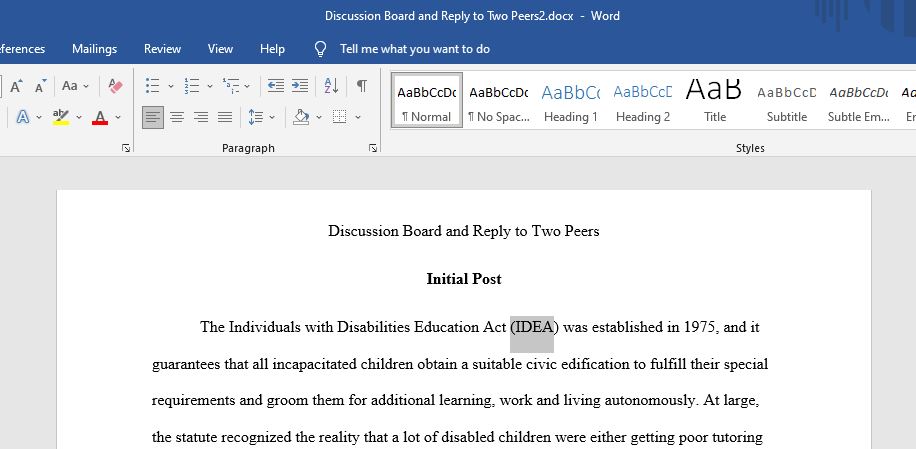Discussion Board and Reply to Two Peers-Civic Engagement and Social Movements
Civic Engagement and Social Movements
“It is estimated that the population of the age of 60 and above in the United States is somewhere between nine and twelve million. I suggest that the national government retire all who reach that age on a monthly pension of $200 a month or more, on condition that they spend the money as they get it.”
— Francis Townsend
According to the Centers for Disease Control and Prevention, civic engagement is “the process of working collaboratively with and through groups of people affiliated by geographic proximity, special interest, or similar situations to address issues affecting the well-being of those people. It is a powerful vehicle for bringing about environmental and behavioral changes that will improve the health of the community and its members. It often involves partnerships and coalitions that help mobilize resources and influence systems, change relationships among partners, and serve as catalysts for changing policies, programs, and practices” (CDC, 1997, p. 9).
Social movements are an important component of civic engagement. Social movements are civically engaged groups who wish to affect a public policy concern. There are three types of social movements:
- Social movements that advocate a public policy change.
- Example: The pro-choice movement.
- Social movements that resist change.
- Example: the anti-nuclear movement.
- Social movements that advocate for those without power.
- Example: American civil rights movement.
Civic engagement and social movements have a long history in America, even before the birth of the United States. During the colonial era, British subjects came together at various times to attempt to change the taxation policies (anti-tax movement) implemented by Great Britain’s Parliament. Indeed, the American Revolution can also be understood as a social movement: colonists began to understand and advocate change based on a new ideology: citizenship.
Social movements within the United States continued post emancipation. Civically engaged citizens have formed groups throughout this country’s history in order to affect public policy change.
One specific example of civic engagement and a resulting social movement are the actions of a 66-year-old physician by the name of Francis Everett Townsend. In September 1933, he penned a letter to his local paper. His plan of action called for the government to provide a pension ($200 dollars) to all retired Americans over the age of 60. This was during the Great Depression, and it had a great deal of appeal to older Americans who had few prospects in their declining years. Before long, “Townsend Clubs” arose around the country, with well over 2 million members. All of this from a single letter to the editor. In time, FDR would sign the Social Security Act of 1935 into law. Though not as extensive as what Dr. Townsend had originally proposed, it was a step forward to provide money to elderly Americans (Kennedy, 1999).
More information about Francis Townsend can be found at the Department of Social Security’s website.
Directions: Using the required, academic readings, and supplemental academic research, please address the following while adhering to the Discussion Board Rubric:
- Select a specific example of public policy from one of the following fields:
- Economic policy
- An example of economic policy is U.S. budget deficit spending.
- Education policy
- An example of education policy are the implementation of charter schools.
- Environmental policy
- An example of environmental policy is the Clean Air Act.
- Foreign policy
- An example of foreign policy is the interplay between civil liberties and the Patriot Act.
- Healthcare policy
- An example of healthcare policy is the Affordable Care Act (Obamacare).
- Welfare policy
- An example of welfare policy is Temporary Assistance for Needy Families (TANF).
- Economic policy
- How did civic engagement and/or a social movement affect a previous or current public policy concern?
- Was the civic engagement and/or social movement example successful or unsuccessful?
- What actions accounted for the success or failure?
- What can we learn from this civic engagement and/or social movement example?
- Support your examples with information from the text and at least two, additional academic sources.
References:
Jasper, J. M. (2009). Social Movements. In D. Carr (Ed.), Encyclopedia of the life course and human development (Vol. 2, pp. 424-429). Detroit, MI: Macmillan Reference USA. Retrieved from http://link.galegroup.com.libauth.purdueglobal.edu
Answer preview:

word limit:564
